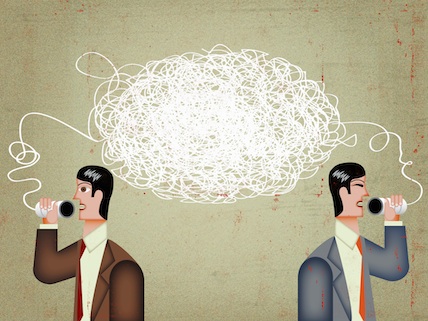Students who read the Sociology stories on this website every month know of our interest in (obsession with?) how Americans talk. This month’s story on the subject is arranged in a different, “jumble-like” format: follow the clues to answer the question at the end. Enjoy!
First, open a new Internet window on your screen. (Keep the present window open so you can read the rest of the instructions.) Then copy and paste this URL to pull up the fascinating new map containing vast amounts of information on American dialects: http://aschmann.net/AmEng/#LargeMap. Besides all the info on the map itself, you can listen to speakers—some famous, some not—from various regions of North America. Clicking on a small green circle will open a chart listing the speaker, his/her location and state, and the link to a video featuring that person. The video column includes additional notes about the speakers and their dialects.
Now you are ready to solve the puzzle. Copy the blanks below onto a sheet of paper (or print out this page). Answer the questions by examining the map, the chart below it, and listening to the indicated videos.
1. In which southern Florida city is “on” pronounced so that it rhymes with “Don”?
__ __ __ __
2. In which southern state does the Lowland South accent extend farthest west?
__ __
__
3. Deborah Chauvin, a New Orleans resident, is from the Ninth __ __ __.
4. What two words does Congressional Medal of Honor winner Drew Dix pronounce the same? __ __ and __ __
5. What version of a Southern accent does country singer Alan Jackson speak?
__ __
__ __ __
6. In Alaska, what indigenous language is spoken by people who live in the areas shaded red?
__ __ __ __ __
__ __
7. Which state is entirely within the Inland North dialect region?
__ __ __ __ __ __ __ __
Now, copy down the letters in the boxes and unscramble them to answer this question:
What can you conclude about American speech from the variety of accents displayed on the map?
__ __ __ __ __ __ __ __ __ __ __ __ __ __ !
Image credit: © Luciano Lozano/Ikon Images/Corbis
| TO CHECK ANSWERS, SEE “QUIZ” AT RIGHT | |





RACE IN DRUG LAWS AND ENFORCEMENT.Racism has been built into the Drug Laws and penal system in the U.S. Studies have shown that mjatrioy of people who use and sell drugs, particularly in New York State and across the nation are white. However, African Americans and Latinos comprise about 91% of drug offenders in New York; specifically, 57% Black, 33% Hispanic, and 8% White of a total population of the roughly 14,000 people locked up in New York State alone for drug offenses (Rockefeller). These trends demonstrate how race is culturally constructed to support the power structure of America. Racialization has been part of the foundation in the nature of the drug laws.Political America chooses to face crime and drug use indirectly. Drug abuse is seen as a cause of social problems, not a product of socio- environmental dereliction, I dare say, because it’s easier to blame minorities. From the beginning of drug legislation we have blamed minorities and their culture for posing a threat to pure American culture. The restriction on opium dens in a California Ordinance in 1875 made Opium dens, run by Chinese immigrants and made fashionable by segments of the white population illegal, beginning the racial scapegoating (Hamowy, 12). Opiates were considered a “loathsome oriental vice” exposing White Americans to danger (Hamowy, 13). What Orientals themselves did was of minor concern. On a side note, Opiates would have to be imported, which could create an addictive foreign commodity, like oil. The Harrison Act of 1914 was the next step in a series of ill- intended, restricting laws that turned drugs into controlled substances. It was passed in part out of fear that cocaine- crazed blacks posed a threat to white society (Youngquist, 90). This notion of a “threat” supports the U.S. imperial, superior moral obligations cause because while drug abuse is a purely relative term, it is subject to a host of social presuppositions, when associated with immigrant groups (p16Dealing). Marijuana was linked with Mexican immigrant abuse and crime because Mexican workers were replacing whites in farm labor (Youngquist, 90). This led to first, the Marijuana Tax Act of 1937 and later it’s illegality all together. The movement to limit access to those drugs introduced by immigrants instigated anti- minority sentiment, not concern for their addictive properties. America, politically, can’t accept that drugs are here to stay. In 1973, Gov. Rockefeller signs the country’s most stringent mandatory- sentencing laws for drug offenses, producing the opening statistics (Rockefeller).Policy makers naively point blame at the dirty habits of minority groups rather than approach drug use as a public health concern. Racialization has been institutionalized in U.S. drug policy, established and enforced by people outside the exploited races. This institutionalized racism exists beyond individual consciousness. Within this racialized system of Drug enforcement policy, an individual’s social life and his or her chances against the institution depend on the physical characteristics assumed to his or her race. Its unfortunate too, because a disproportionate number of black men within five- million felons will loose the right to vote because of these racialized, often flimsy convictions (Los).Hamowy, Ronald. Dealing with Drugs. San Francisco: Pacific Research Institute for Public Policy, 1993.Los Angeles Times Let Felons Vote 29 Oct 2008.Paul Youngquist. “Score, Scan, Schiz: Dick on Drugs.” Cultural Critique. 44. (2000): 87- 107.Rockefeller Drug Laws: Q & A. 2008. Drug Policy Allience. 3 October 2008
???